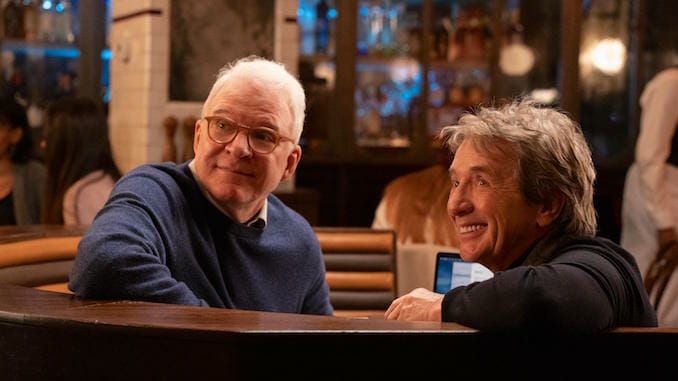Mystery Solved: Only Murders in the Building Proves TV Shows with Older Leads Can Still Be Hits
Photo Courtesy of Hulu
If television is a reflection of modern society, it’s pretty clear we all take older adults, especially seniors, for granted.
If this wasn’t the case, the somewhat surprising success of the Hulu series, Only Murders in the Building wouldn’t seem like such an aberration. To be sure, Selena Gomez (29) lowers the average age of the show’s main trio, but the other two lead actors of the mystery dramedy—Steve Martin (76) and Martin Short (71)—have been old enough to collect Social Security for years.
While Only Murders in the Building is a critical hit and has been a renaissance for two comedic legends, it is also a stinging reminder of how TV used to celebrate older actors. The history of American television is littered with fascinating characters who were typically 50 and older, but over the past five decades that’s slowly and dramatically changed.
The 1970s were full of rich and colorful roles played by mature leads. Characters like Archie Bunker (Carroll O’Connor in All in the Family), JR Ewing (Larry Hagman in Dallas), Maude Findlay (Bea Arthur in Maude) and Fred Sanford (Redd Foxx in Sanford and Son) were not only memorable, but pop culture phenomenons.
The trend continued in the 1980s. Murder, She Wrote was one of CBS’s biggest hits for 12 years and was nominated for 10 Golden Globes and 12 Emmy Awards. Series star Angela Lansbury was 71 when the series ended. The Golden Girls focused on the lives of four older single women between the ages of 52 and 79, and was an instant ratings hit. Dynasty,, The Equalizer, and The Cosby Show, which was the most popular TV series of the 1980s, are just some of the successful programs that had older actors as in leading roles.
So when did Hollywood decide being old wasn’t cool? How did we go from a world where septuagenarian Angela Lansbury is the biggest star on television to teenager Millie Bobby Brown? I blame Beverly Hills, 90210, which premiered in 1990.
Now don’t get me wrong, I love the Walsh clan. I thought Dylan McKay was cool, David Silver was an adorable nerd, and I wanted more than anything to dance at The Peach Pit After Dark with Kelly Taylor. I was roughly the age of most of the cast at the time (Except for Andrea Zuckerman, who even I thought seemed a little out of place in high school) and enjoyed the show’s plot lines, which could border on the ridiculous but could also touch on important social issues.
The success of Beverly Hills, 90210 became a template for every teen-centric series that followed. While it wasn’t a critical hit, its incredible popularity led to a series of copycats, as its harder edge proved there was an audience for its occasionally risqué content. From Beverly Hills, 90210, the evolution of the teen genre is easy to trace. The series begat Dawson’s Creek (1998), Freaks and Geeks (1999), The OC (2003), Gossip Girl (2007), and countless others. From there, the interest in dramas and comedies with teen leads only intensified.
-

-

-

-

-

-

-

-

-

-

-

-

-

-

-

-

-

-

-

-

-

-

-

-

-

-

-

-

-

-

-

-

-

-

-

-

-

-

-

-








































